A SEMINAL NON-EVENT IN THIS YEAR’S GARDEN
No Drama
A seminal moment in the gardening year turned out to be thankfully anticlimactic. That moment was the arrival, on the morning of November 2nd, of the first fall frost. It turned out to be more than just a frost; it was a freeze, with temperature plummeting to a very chilly 22.7°F at 7:33 that morning. (I didn’t have to keep running outdoors to check my thermometer, but am able to monitor past temperatures recorded on my iPhone throughout days and nights with my handy Sensorpush.)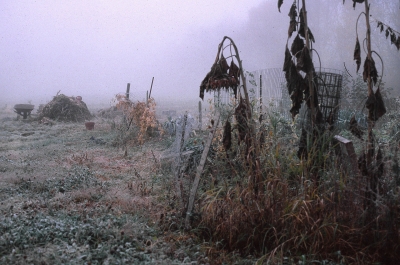
The cold weather had taken its time in arriving. Weather stations around the country have compiled the “average date for the first killing frost” for sites throughout the country. (Also the “average date for the last killing frost” for spring.) Where I farmden, that first frost date is October 22. That is an average; the chance of frost arriving sometime before early November is 80%, and the chance of that frost arriving by mid-October is 20%. Last week’s freeze was late.
Years ago, as a novice gardener, I planned my gardening around these published dates. I considered these averages fixed in stone. With global warming, those dates were officially amended. Messed me up for awhile until I realized that the complexity of the natural world makes it appear capricious.
Fall Garden Checklist
The reason the November 2nd event was drained of its drama — again, thankfully — is because I was fully expecting it. Not specifically then, but sometime around then. So I prepared for it a week or more ahead of time. What’s to prepare beyond waking up to see beds covered in hoary lettuces and cabbages, and limp, darkened pepper plants?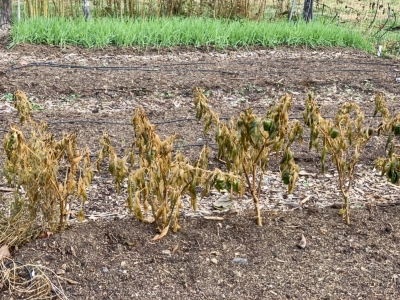
For starters, I drained water from my drip irrigation lines. All that was needed was to disconnect the timer, filter, and pressure reducer at the spigot, and bring them indoors, and then to partially open the seven caps or valves on the mainlines.
Still in the water department was to disconnect any hoses from the ends of my three frost-free hydrants. 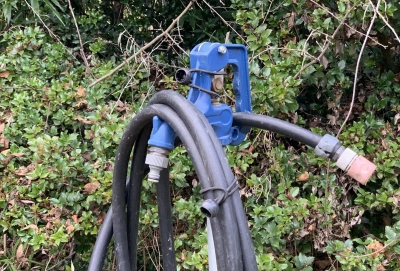 These hydrants can deliver water even in the depths of winter because, when water is turned off, any water remaining in the hydrant between the spigot and three feet below ground drains out through the valve down there. A hose buried left connected with its open end in snow could put the brakes on the free flow of water down and out the shut valve down in the warmer depths of the earth. Water frozen in the pipe above ground could then freeze and burst the pipe.
These hydrants can deliver water even in the depths of winter because, when water is turned off, any water remaining in the hydrant between the spigot and three feet below ground drains out through the valve down there. A hose buried left connected with its open end in snow could put the brakes on the free flow of water down and out the shut valve down in the warmer depths of the earth. Water frozen in the pipe above ground could then freeze and burst the pipe.
I also attended to my compost piles. I gave a recently finished pile a final watering and then covered it to lock in water and heat. I use EPDM (ethylene propylene diene terpolymer), a durable material used for roofing that’s heavy enough not to blow away. With cold weather just around the corner, I piled on some extra layers of EPDM to limit the amount of composting heat rising up and out of the pile. That was effective! After a couple of weeks, the long stem temperature probe has registered consistent temperatures around 120° F for the past couple of weeks eighteen inches down in the compost’s innards.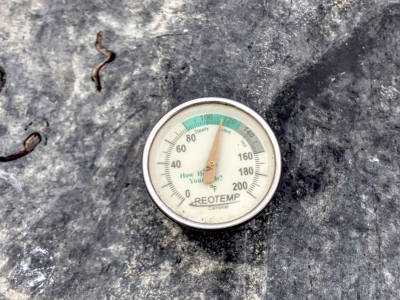
A Winter Home for Each Plant
Preparation for frosty or freezing weather requiring the most judgement and thought concerns what to do about plants. Tender houseplants such as Ondotoglossum orchids, ponytail palm, holiday cactus, orchid cactii, and plumeria, with natural homes in the tropics, shiver even if they don’t die when temperatures drop below 50°. They came right into the house. In this category also is my weeping fig bonsai, about which I’ve frequently written.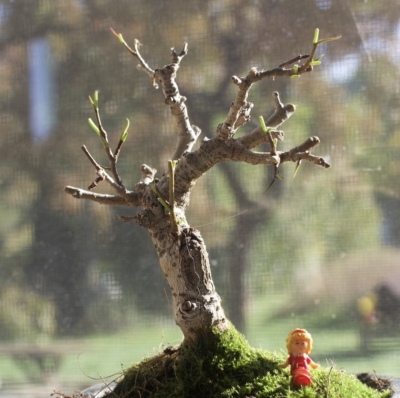
Next in line were subtropical plants, whose tolerance for cold extends down to about 10°. That tolerance is for plants in the ground in the subtropics; tolerance is lower for potted plants because plant roots are less cold hardy than stems and leaves, and, in pots, roots are more exposed to ambient temperatures. So olive and black mulberry (Morus nigra) got moved to a sheltered spot near my home’s brick wall. Some cold exposure does them good, letting them complete their life cycle to fruit next year. Depending on the weather, these plants might stay outdoors in that sheltered location until sometime into December.
My two little “tree” rosemaries came into the house. 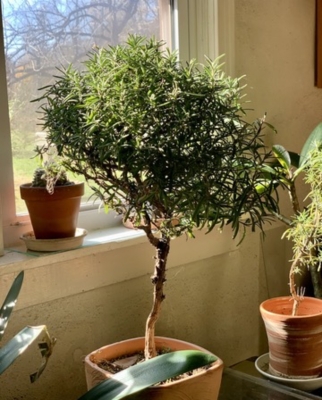 These subtropical plants don’t need cold to complete their life cycle so could have stayed outdoors longer. But they look pretty in the house and provide fresh rosemary within easy reach for pizza and salad dressings.
These subtropical plants don’t need cold to complete their life cycle so could have stayed outdoors longer. But they look pretty in the house and provide fresh rosemary within easy reach for pizza and salad dressings.
Hardy cyclamen also came in, in this case to a window in the mudroom where their pretty blossoms can be enjoyed every time we pass in and out of the house, those blossoms prolonged by the coolness of that room.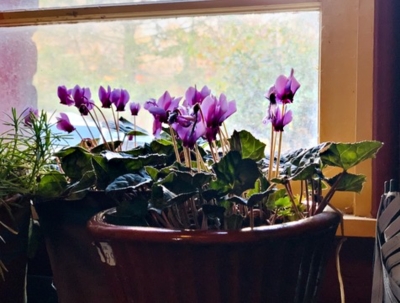
And last, but surely not least, are my miscellaneous cold hardy, potted plants, including such plants as arborvitae, grapes, hydrangeas, fantail willow, and red maples. All these plants are awaiting a permanent home in the ground next year, as soon as I figure out where to plant them. If in small enough pots so that their roots would be exposed to too much cold, they go into my unheated basement. The larger ones are now cozily clustered near the north wall of my home. Out there in winter, they pick up a little heat from the house, are sheltered from winds, and get partially buried under snowfall.
I preempted that chilly night out in the vegetable garden by setting up row cover tunnels over wire hoops. There, arugula, mustard, lettuce, and cabbages are thriving. Not that they needed those tunnels, at this point, at least.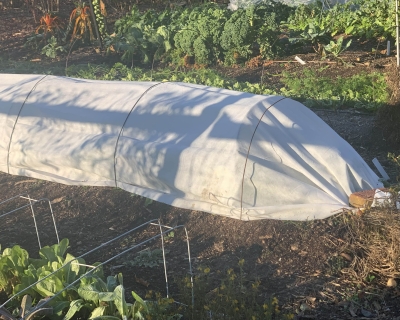
I left a couple of beds of lettuce, endive, radishes, and turnips uncovered. After the freeze, these cold-hardy plants shook off their frosty coverings and were looking perky as the day warmed.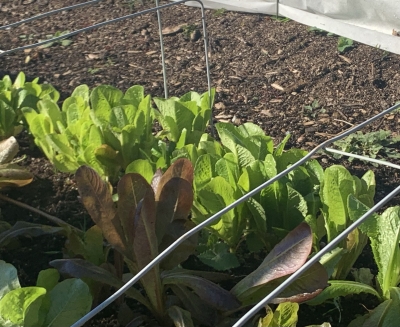


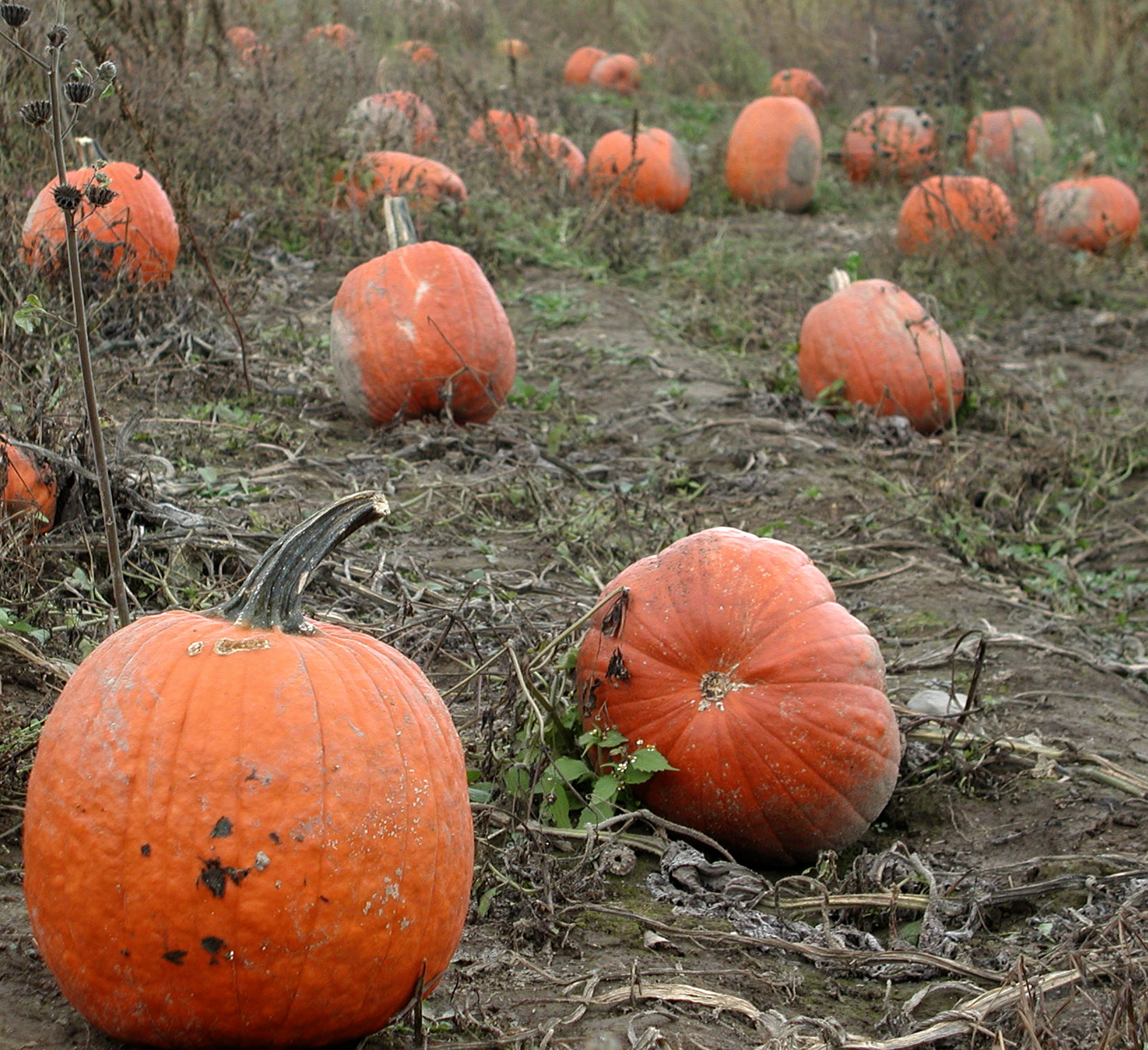
What about the figs?
My potted figs were hit by a late spring frost here, which severely weakened them. Usually, I would leave them out into December, as long as temperatures remained above the low 20s. But because they had been weakened, I put them in cold storage (a walk in cooler) before that fall freeze. The greenhouse figs are in the ground so can’t be moved, but they’re fine right where they are, of course.
Have a baby cedar in a pot, also some lamb’s ears. Should the pots just be left in my cool varage?
The cedar is evergreen so needs some amount of light ni winter. The cooler the storage, the less light needed. Ideal temperaatures for storing either plant would be right around freezing.